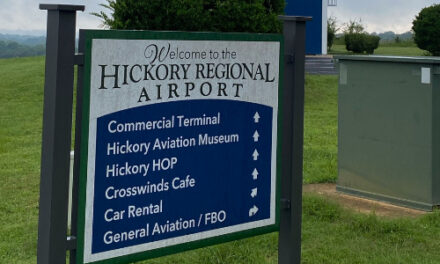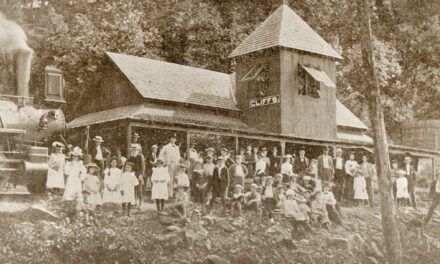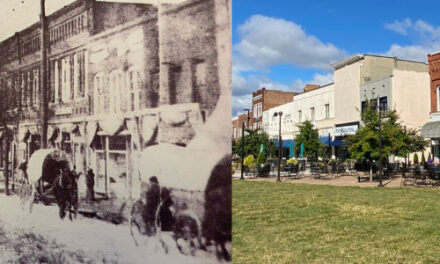
The landscape is always changing in a growing city. Especially, if you ride up 321 through northwest Hickory into Caldwell County these days. Older buildings that were there one day might be gone the next as progress happens. However, there is one building that remains, and is actually on its third incarnation. Some remember those previous lives. Now, we call it Appalachian State University’s Hickory Campus, but it lived under previous identities, if you go back far enough.

Photo: A shot of the original Hickory Home Furnishings Mart. Since, it has gone through some changes.
Actually, it goes back to another building now known by a different name. In the spring of 1951, over in Viewmont, the Hickory Foundation Center housed the first multi-manufacturer furniture market in western North Carolina. The facility, now the YMCA, welcomed furniture buyers to come (and buy) the output of furniture makers in the region. The basketball court was converted into a showroom with sheets draped across wires to designate each display space. The success of the biannual presentation grew to the point that organizers began to look for a dedicated space, created just for the purpose of showing off the latest designs by area manufacturers.
There was another place in town doing the same thing, but we will get to that a bit later.
On a hill next to a cemetery, along Highway 321 (already four lane at that point) the Hickory Home Furnishings Mart opened its doors to furniture retailers from across the nation in 1963. Originally, the huge structure featured a drive-in portico on the highway side that offered entrance into 86,000 square feet of wood and cloth product. Constructed at a cost of $700,000, the two story showroom welcomed buyers each April and October in the effort to keep the factories busy the rest of the year.
Though Lenoir pumped out more product and Drexel was a company far larger than any in Catawba County, centering the furniture market in Hickory proved to be a good move. It was centrally located which made it easier for buyers to travel up from High Point to see what else was available in the latest furniture designs, even though Interstate 40 was a decade away from completion. For a while, it put Hickory on the map as a destination. During the market, hotel rooms and restaurant reservations were tough to get when the market was in town.
The competition with High Point all worked famously, until the mid-1980s. Both cities battled to be know as the “Furniture Capital of the South.” Since 1921, High Point had hosted an “exposition” as they called it in those days, so they had a head start down east. By the 1980s, the Hickory Home Furnishing Mart was growing empty. The property went on sale and a new joint venture between Siemens and Corning corporations, called Siecor, needed a corporate headquarters. Guess what large building fit their needs? After a retrofit, they moved in. Orientation into the facility changed to the side away from 321 and for the next few decades, it housed the hub of company activities. Even when Corning bought Siemens out and the logo on the face changed, “Castle Gray Skull” as some employees named the edifice, put Hickory on the map again, this time as a center for production of fiber optic cable.
As we ruefully realize, nothing lasts forever. With Corning’s move of its corporate headquarters to Charlotte, the Castle stood empty one more time, until last year. That’s when App State got the building at a bargain price, planned a renovation that now numbers the square footage at over 220,000 and plans classes for the fall.
Historians (and others) call that “adaptive reuse.” Just another step in the march of time. Next week, the fate of the other furniture market showroom in town.









